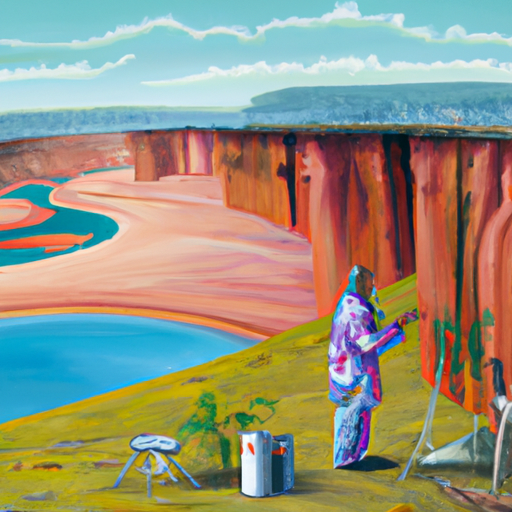The Unseen Influence: Exploring the Impact of Climate Change on Indigenous Art
In the contemporary global context, climate change is undeniably one of the most critical issues. This urgent concern is not only impacting the natural ecosystems but also inducing transformative changes in various aspects of human life, including the realm of indigenous art. This article explores how climate change, with its profound and multidimensional effects, is influencing and transforming indigenous art across the globe.
Climate Change and Indigenous Artistries: A Global Perspective
For indigenous communities worldwide, art is a significant element of their identity and cultural heritage. Their artistic practices, often intertwined with their surrounding environment, are now changing and evolving due to the changing climate patterns. Climate change has been dismantling the traditional resources required for their art, disrupting seasonal cues that influence their creative processes, and transforming cultural landscapes that inspire their work.
Artistic Reactions and Interpretations to Climate Change
While climate change inflicts challenges, indigenous artists are constructively incorporating these changes within their work. Visually and conceptually, their art is reflecting the histories, struggles, adaptations, resilience, and advocacy for environmental preservation linked to their indigenous roots. Through unique artistic expressions, they shed light on how their communities are facing and responding to this global issue.
Spotlight on Specific Art Pieces
Many remarkable pieces of art reflect these changes. For instance, Inuit artists from the Arctic region create sculptures and prints that narrate the radical climate-induced changes in their surroundings. The Melanesian artists of the Pacific have been weaving climate change narratives into their traditional Tapa cloths, resulting in dynamic and expressive pieces that subtly yet powerfully articulate ecological shifts.
Indigenous Art in the Future: A Beacon of Awareness
The future of indigenous art in a climate-changing world promises to continue its role as a powerful medium of expression and awareness. Despite the changes, it portrays, indigenous art, with its deep connections to the natural world, has the potential to foster critical conversations about climate change. It effectively humanizes this global issue, reminding the world of the tangible consequences of these changes on communities and cultures.
Conclusion
As we delve deeper into the unforeseeable future dictated by climate change, indigenous art stands as a testament to cultural resilience and as a messenger of the inherent interconnection between humans and their environment. Through their artistic expressions, indigenous communities continue to communicate their experiences and concerns, reminding us all of the urgent need to address, adapt and mitigate the impacts of climate change.

















Comments
Leave a Comment